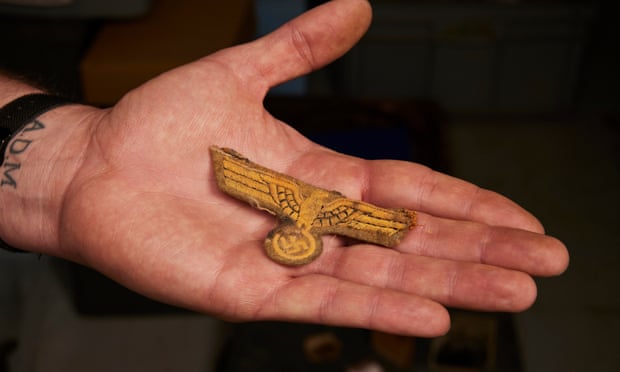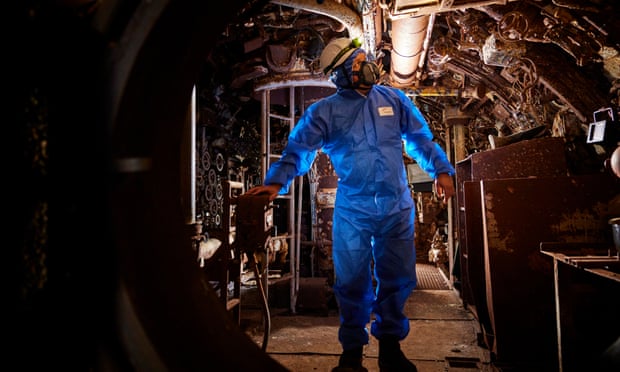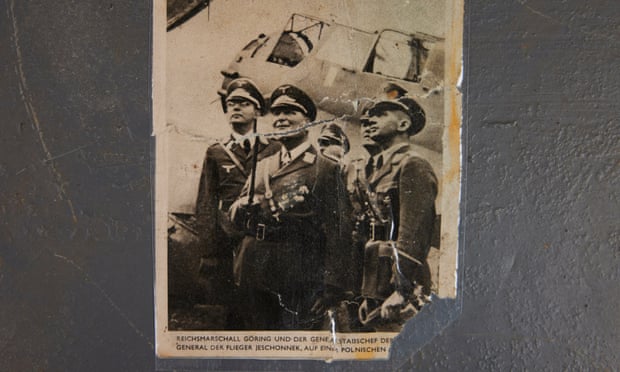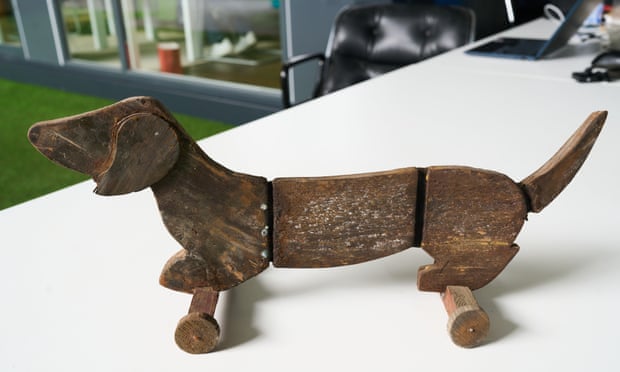
There are two enigma machines, dozens of bottles of French wine and about 200 condoms, along with toothpaste that is still mint and coffee that has retained its aroma.
A trove of extraordinarily well-preserved Nazi artefacts, recovered from a sunken submarine in the 1990s after nearly 50 years at the bottom of the ocean, are to go on public display for the first time.
Historians are examining thousands of previously unseen artifacts that have not been touched since 1945, hoping to find new insights into the lives of those who spent months aboard German U-boats during World War II.
Visitors to the Secrets of the Last U-Boat exhibition at the Western Approaches Museum, a secret former underground war bunker in Liverpool city centre, will be among the first people in 80 years to see the discoveries that will be added to direct to exhibition as they are unboxed.
A fabric badge of a tropical uniform. Photograph: Christopher Thomond/The Guardian
“We will look at it on Monday and it will be on display on Friday. It’s new stuff that nobody’s seen,” said Dean Paton, founder and director of Big Heritage, a social enterprise specializing in heritage and education.
Among the objects, which were remarkably preserved by the cold water and layers of slime, are boxes of toothpaste and coffee, along with postcards bearing Hitler’s stamps and hundreds of pages of secret Nazi documents.
When translated and analyzed, these could hold the answer to why this particular submarine did not surrender at the end of the war, a mystery that has long puzzled historians.
In addition to being physically displayed to the public, the discoveries will be displayed on Big Heritage’s social media channels under the name How To Fix AU–Boat, with hundreds of enthusiasts and experts helping to translate German documents and lending their knowledge and knowledge to help put the findings into context.
 The U-boat had been on public display in Birkenhead from the 1990s until 2020. Photograph: Christopher Thomond/The Guardian
The U-boat had been on public display in Birkenhead from the 1990s until 2020. Photograph: Christopher Thomond/The Guardian
Paton said: “It’s amazing to have such a huge following. It’s a project of international importance and that’s reflected in the fact that people from all over the world are getting involved.”
Surviving copies of confidential Nazi documents are rare, so the team hopes the folders of papers recovered from the submarine can help understand what happened at the end of the regime.
“This is a long-term puzzle, or a game of Cluedo, where we’re putting all the pieces together,” Paton said.
 A postcard found in the sunken submarine. Photograph: Christopher Thomond/The Guardian
A postcard found in the sunken submarine. Photograph: Christopher Thomond/The Guardian
U534 was the last submarine to leave Germany in 1945 and historians suspect it may have harbored senior Nazi officials planning to escape to another part of the world before it was sunk by two RAF liberators in May 1945, 20 km from the Danish island of Anholt. Of the 52 crew members, 49 survived and none remained on board.
Paton said: “There was an Argentine radio operator on board, and he had the fuel and range to go to Argentina. They had tropical uniforms but they were in the North Sea, so where were they going?
After being raised from the depths in 1993, U534 has been owned by Merseytravel and was on display at Woodside Ferry Terminal as U-Boat Story until its closure in 2020.
It was taken over by Big Heritage in November last year and is undergoing redevelopment. The boxes surprised Paton and the team, who did not know they existed as they were packed away in 1993 and untouched by the submarine’s previous owners.
The plan is to reopen the U-Boat Story at the end of 2023 to encourage more local people to take an interest in history and attract tourists to an often overlooked part of Merseyside.
 A handmade wooden “sausage dog”. Photograph: Western Approaches Museum
A handmade wooden “sausage dog”. Photograph: Western Approaches Museum
Paton founded Big Heritage 11 years ago “because I felt there was a gap for ordinary working-class people to understand and engage with heritage,” he said.
The organization has received grants from naval charities and the Leveling Up Fund, as part of the regeneration of parts of Birkenhead, a cause Paton is particularly passionate about.
“I’m a Birkenhead boy born and bred so this is a labor of love,” he said. “I think we’re going to see a revival of Birkenhead and that’s a big driver for us, using the heritage to regenerate.”

